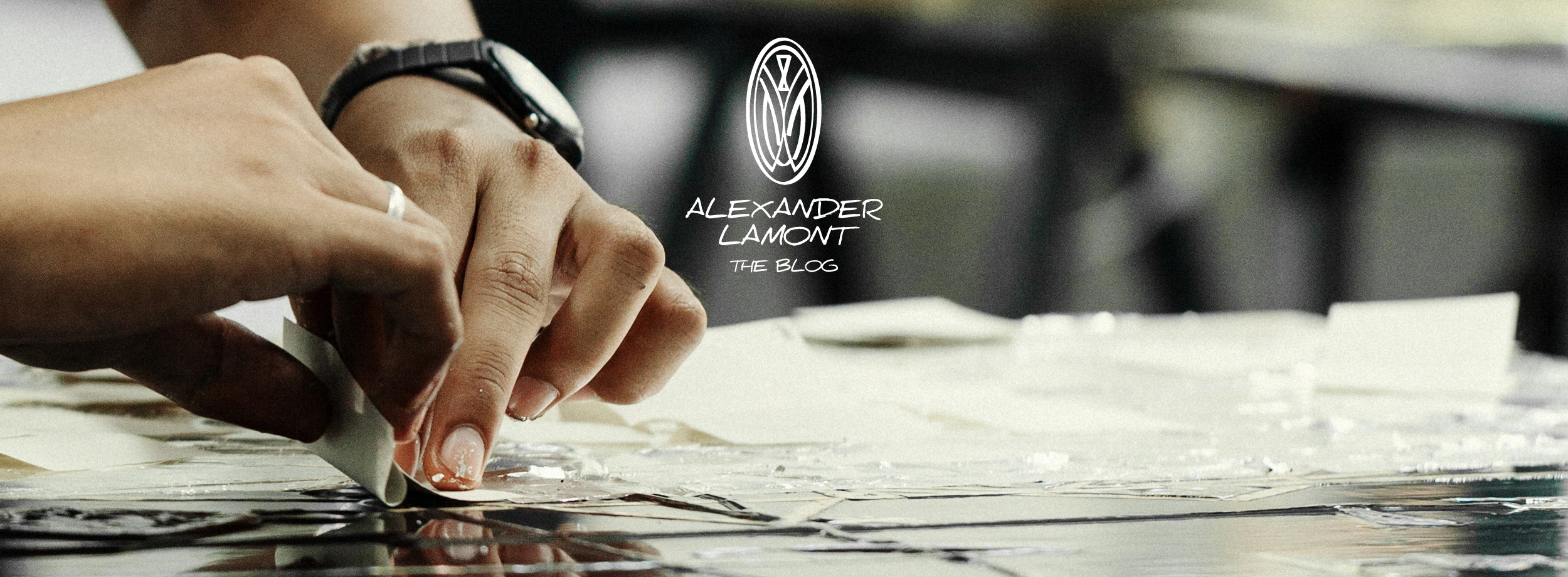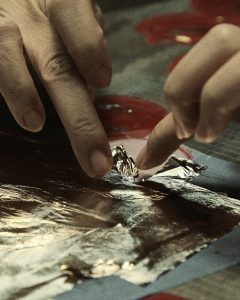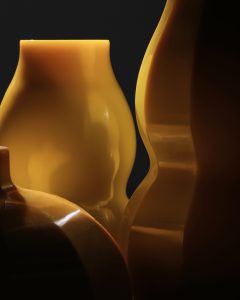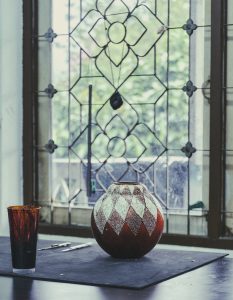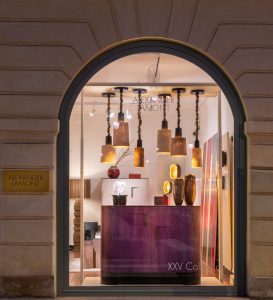Do you know, that if you were able to hold up a sheet of gold leaf you would be able to see right through it? It would be very difficult to try to do this as gold leaf is incredibly thin and delicate but it means that gold leaf is more of a ‘complexion’ than a finish. The material requires good tools and very dry, calm and practised hands to work it effectively. Because of its thinness, when you look at an object that has been gold-leafed, you are in fact seeing the surface texture of what is below the gold sheathed in this film of gold. If one wants a shiny reflective gold (like that on the gilded coconuts seen below) then you have to carefully create a shiny surface first to apply the gold onto. If you apply the gold leaf onto lacquered sand (like the Bague Spot Table), then you see the texture of sand exactly – but gold sand.
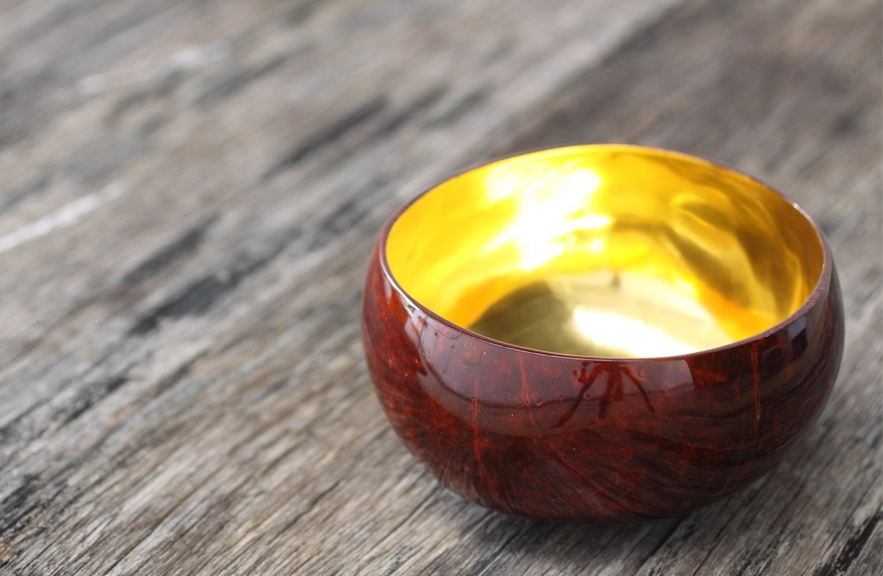
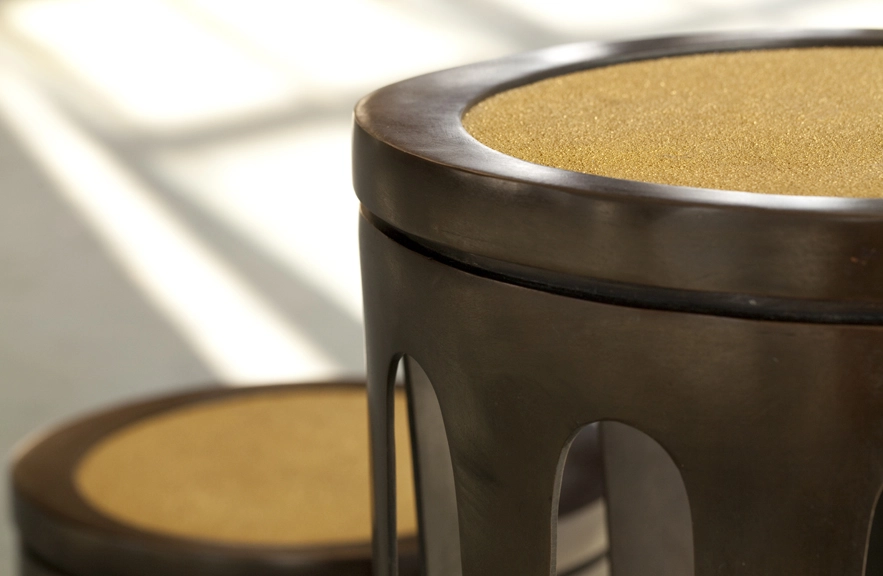
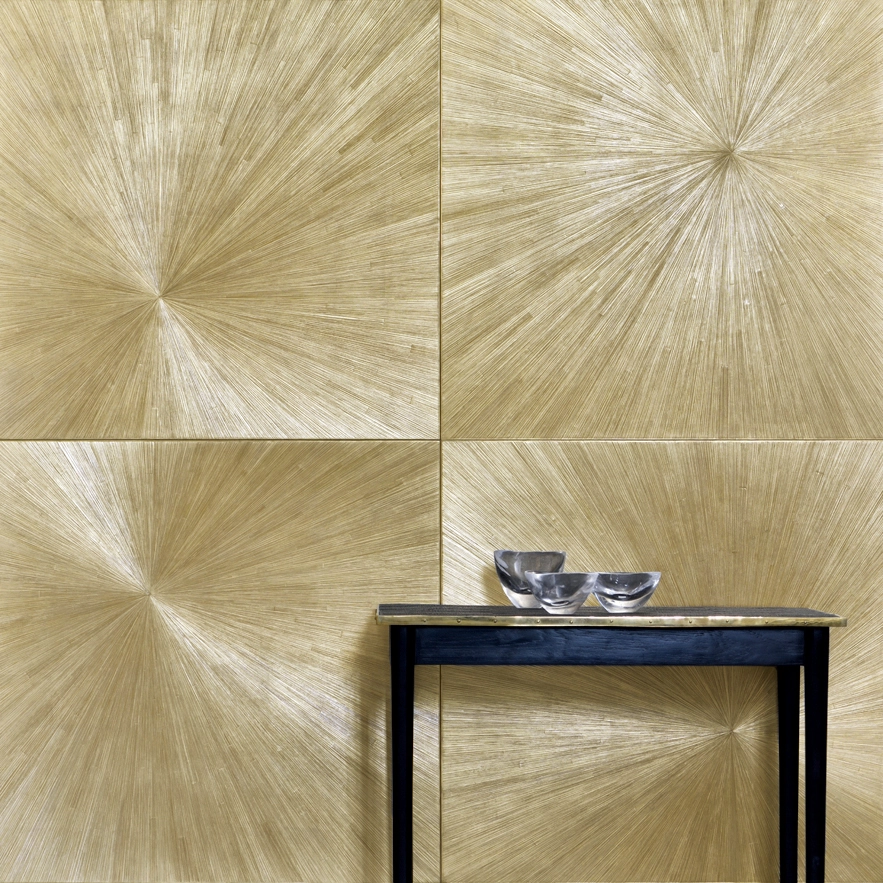
Gold leaf is at the heart of many of our designs. It is not because of any glamour or bling that gold might have. It is because the delicious rich egg-yolk tone and reflective glow is unlike any other and provides the perfect compliment to the warmth of dark cast bronze. We use gold leaf in many tones and on many objects and surfaces.
The gold leaf we use comes from Italy, China, Burma and Thailand. It differs in its size, colour and strength according to country, method and gold alloy. Both Burma and Thailand only produce pure gold squares (of 3x3cm) because they hammer the gold by hand and requires a soft metal. Other countries hammer using a machine-hammer that still requires a skilled worker to hold the pack and move it to make sure the hammering is even. They are able to make squares of up to 11x11cm. Most gold leaf in Southeast Asia is made for religious use while in other countries it is used more as a decorative surface.
The photographs below are from a gold leaf workshop in Thailand. By contrast, the video here shows the process done by machine in Japan, along with how the special packing paper is made.

Right – Gold pack held in place with bamboo strips during hammering.
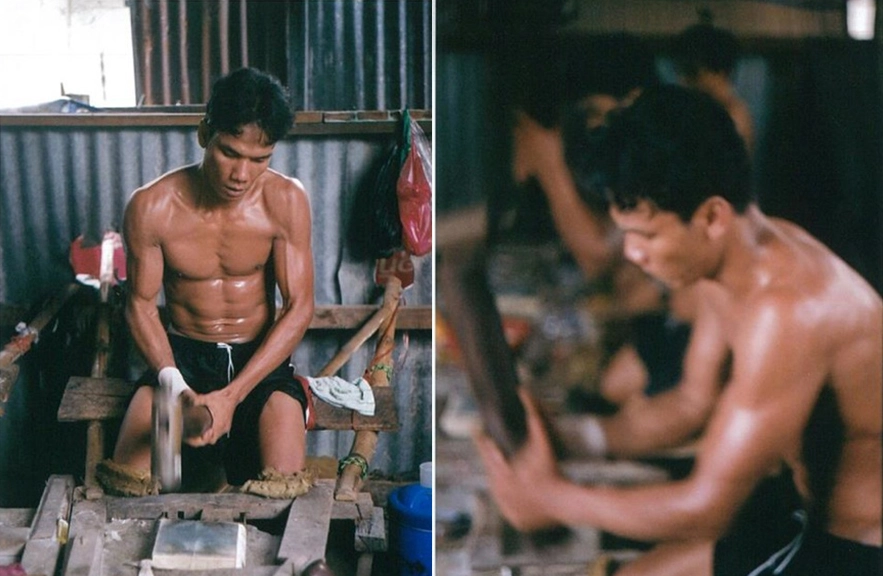
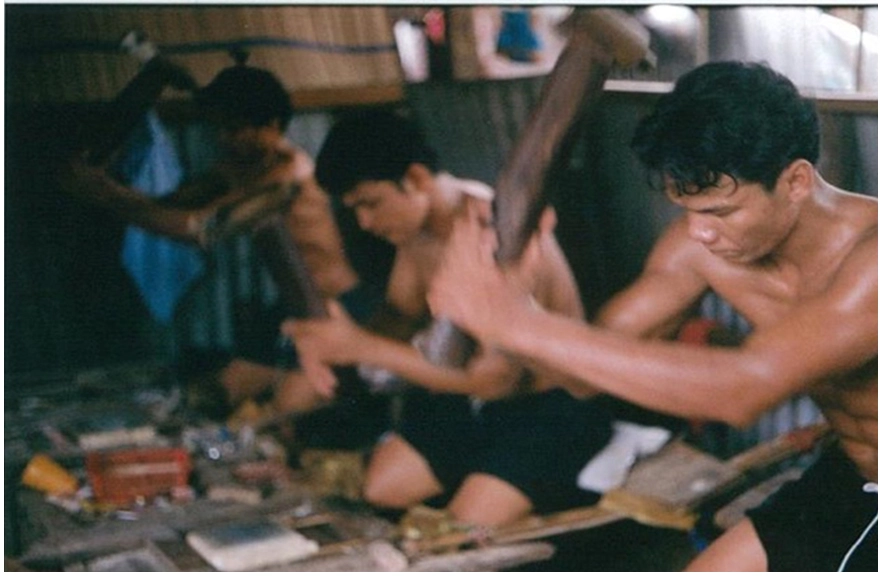
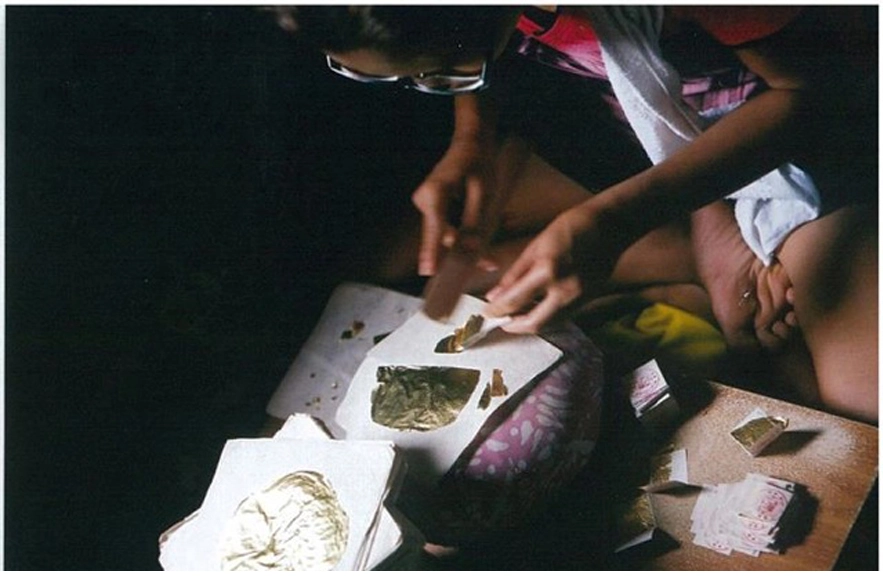

Gold leaf has many wonderful decorative uses. From gilded picture frames to highlights on the icons of Byzantium, to being applied to fancy chocolates. The gossamer layer coats any surface that has been lightly covered with thin lacquer and brings the enduringly beautiful richness of gold to the object.
